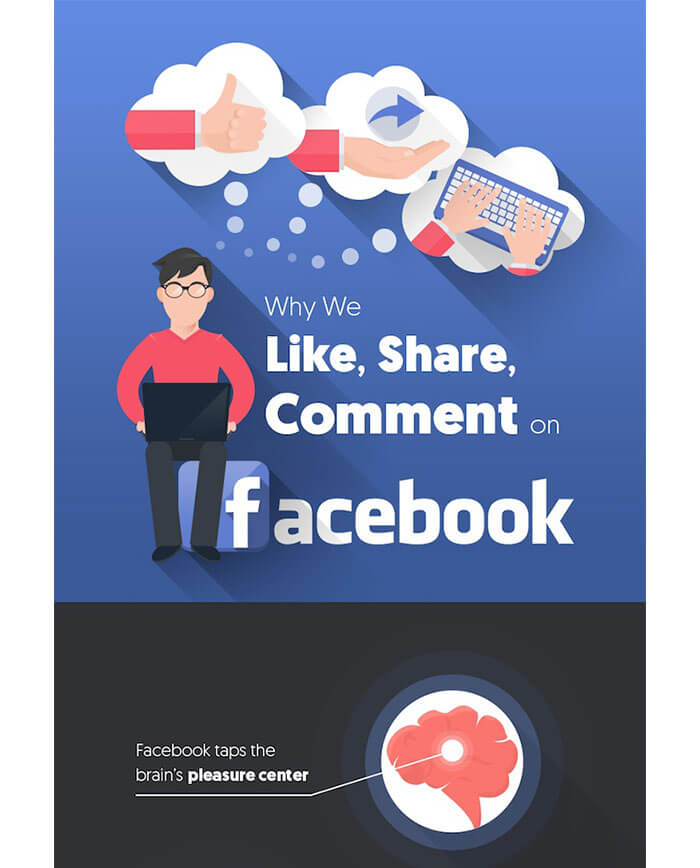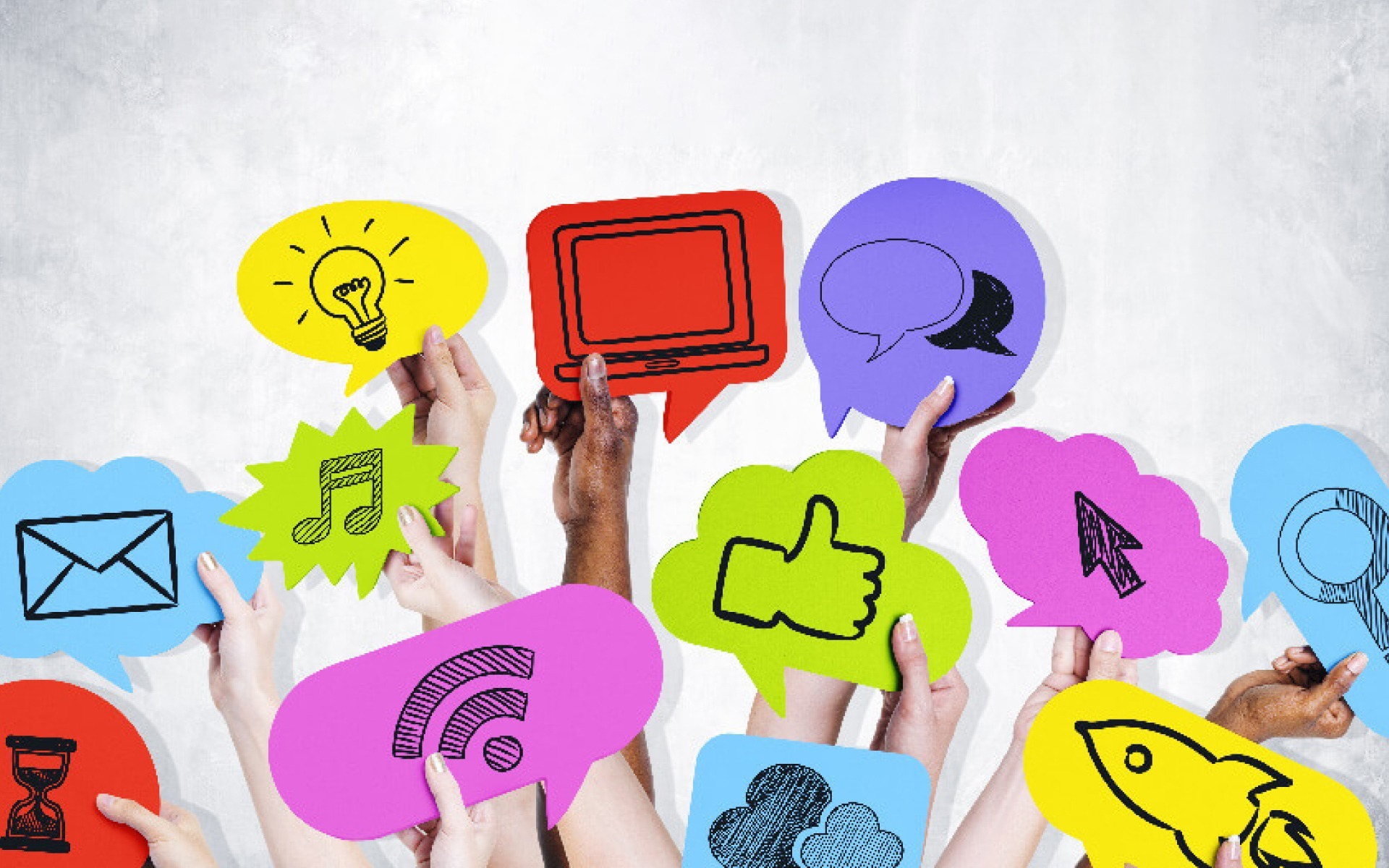Why do People Like, Comment and Share on Social Media?
July 31, 2015
Social Media marketing has swept the board for marketing strategies almost since its inception. There has to more than the usual ‘ooh shiny!’ marketing mentality that engages people on any social media platform or the novelty would wear off fairly quickly and people would become immune. If anything, the engagement on
Facebook,
Twitter and other social media platforms is growing and learning to leverage that popularity is becoming the number one priority for many marketing campaigns.
You can find a plethora of articles about how to create great content, when to engage your audience, and what audiences may like, but High quality, quantitive
research as to why people like, share and comment on social media is few and far between so there are a few conclusions you can draw from it. It all seems to boil down to one fact – no one really knows why a person is drawn to share a post, other than … they like it.
This poses a few headaches for marketers as they scramble to try and increase their market share by leveraging these
behaviors, but it is worth working out how much you understand and how you can use it.
Check out
the infographic below from QuickSprout to learn more about why people use Facebook and what businesses can learn from it.

Lots of studies have worked toward figuring out what exactly goes on in our brains when we’re participating in social media—specifically, Facebook.
A recent one discovered a strong connection between Facebook and the brain’s reward center, called the
nucleus accumbens. This area processes rewarding feelings about things like food, sex, money and social acceptance.
When we get positive feedback on Facebook, the feeling lights up this part of our brain. The greater the intensity of our Facebook use, the greater the reward.
Another fascinating study recorded physiological reactions like pupil dilation in volunteers as they looked at their Facebook accounts to find that browsing Facebook can evoke what they call
flow state, the feeling you get when you’re totally and happily engrossed in a project or new skill.
According to Facebook’s Help Center, a like is “a way to give positive feedback or to connect with people you care about.” The giant recently released statistics indicating that over 65 million users like things daily, and although it’s generally more popular among younger users, people of all ages seem to enjoy pressing the like button.
The fact that it’s such a popular element of the platform’s functionality goes a long way in showing how important it is, both for the people sending it, and those of us receiving it.
What lies behind our obsession with like?
Like has become much more than just a positive reaction toward a post or update; it has evolved into a feedback toward the person her/himself. As a rule of thumb, the more likes you get, the more loved you’ll feel. In fact, according to anthropologist Krystal D’Costa, the like button has become so influential as a tool, that it can boost or shatter one’s ego—in effect, it has become “an extension of one’s digital personal.” Not only that, but other researchers have shown that like-based communication actually decreases the feeling of
loneliness, as it conveys a sense of
empathy and caring.
From the sender’s perspective, sending a like can have the same effect as smiling or saying a kind word to someone. It is basically a really easy, low-cost way to communicate positive feedback.
Social networks have become an accessory. A bit like that must-have bag, trainers or gadget. They say something about us. Actually they say a lot about us. People use them to put the best version of themselves out there. In fact for many, it’s the version of themselves they aspire to be.
On Instagram, we share photos of things we think are cool, helped by snazzy filters to really finish off the look. On
Pinterest, we pin the stuff we aspire to be or have: clothes, homes, holidays, books, music, art.
On Twitter and Facebook we discuss the things that are important to us, from that new blockbuster movie and album or the freedom to breastfeed in public. These are all badges we wear proudly and they allow others to create an online persona.
So it stands to reason that with Facebook, people will ‘Like’ the products and services that fit a certain aspiration. The pages that align with their own self-beliefs.
The easiest way into a customer’s heart is through happiness. If you can put a smile on your customers heart you can almost sell them anything. It’s a known fact throughout the sales industry and is the reason they try to delight you with coffee and a joke when you walk on the car lot. These little gestures are all meant to make you smile. Because if you can make a customer smile, you increase the chances of selling them something.
Entertaining your customers doesn’t always mean making them laugh out loud and slap their knee in hysteria. That’s not the case at all. Entertaining your fans on Facebook means providing them with content that is relevant, timely and engaging. It means providing them with content that ties into their interests while still communicating your brands story. For example, it’s entertaining to see a brand like Skittles share the April Fool’s day joke above the same way it’s entertaining for EA SPORTS Madden NFL to share a content simply asking fans who they think should be the league MVP.
Beyond these ideas, another great tactic for creating
viral Facebook posts is using reactive storytelling. Reactive storytelling is the combination of a top of mind idea and a brand relevant message that is easily shared and provides your fans with timely entertainment. An example of this was when Oreo shared a status update about the Superbowl Blackout and “Dunking in the Dark” during Halftime when the SuperDome had a power outage.
Outside of entertaining your fans is embracing the idea of ensuring that the content you share is always valuable. The value of the content you share can be measured in the
feedback from your audience. If you’re sharing posts that are driving a lot of positive engagement; you can assume that the content is considered valuable to your audience. An example of valuable content is when a brand like LuLuLemon shares a tip or trick on living a healthy lifestyle. They know their audience and they know their story. The combination of those two elements create a valuable piece of content that their audience embraces.
Taking the time to understand why your clients and perspective customers are liking and engaging with posts you can use them more effectively in your online marketing. We live in a ‘liking’ culture and we cannot guarantee where it will take us. Riding the ‘happy clicking’ wave is the only way to know for sure.
 Talk to a person
Talk to a person



